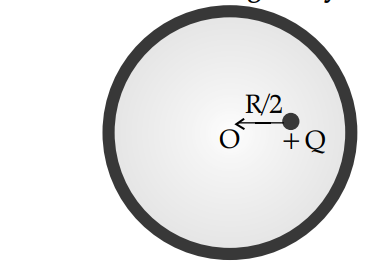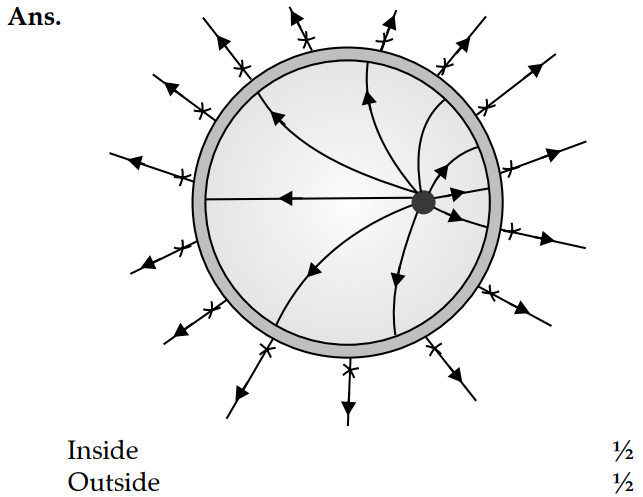Figure shows a point charge + Q, located at a distance R/2 from the centre of a spherical metal shell. Draw the electric field lines for the given system.



A point charge +Q is placed in the vicinity of a conducting surface. Draw the electric field lines between the surface and the charge.
A charge q is placed at one corner of the cube. The electric flux passing through any one of its face is
Two point charges q1 and q2 are located at points (a, 0, 0) and (0, b, 0) respectively. Find the electric field due to both these charges at the point (0, 0, c).
Two charges of 2uC and 5uC are placed 2.5 cm apart. The ratio of Coulomb's force experienced by them is
Derive an expression for electric field of a dipole at a point on the equatorial plane of the dipole. How does the field vary at large distances?
Find the expression for electric field intensity in an axial position due to electric dipole.
When a body charges by conduction, its mass
(A) Remains same
(B) Increases
(C)Decreases
(D)Increase or decrease
Why do the electric field lines never cross each other ?
Figure shows the field lines due to a positive charge. Is the work done by the field in moving a small positive charge from Q to P, positive or negative? Give reason.
A point charge +Q is placed in the vicinity of a conducting surface. Draw the electric field lines between the surface and the charge.
The plot of the variation of potential difference across a combination of three identical cells in series, versus current is shown below. What is the emf and internal resistance of each cell ?
A capacitor of 4 μF is connected as shown in the circuit Figure. The internal resistance of the battery is 0.5 Ω. The amount of charge on the capacitor plates will be :
State which of the two a capacitor or an inductor, tends to become SHORT when the frequency of the applied alternating voltage has a high value.
Nichrome and copper wires of same length and same radius are connected in series. Current I is passed through them. Which wire gets heated up more ? Justify your answer.
